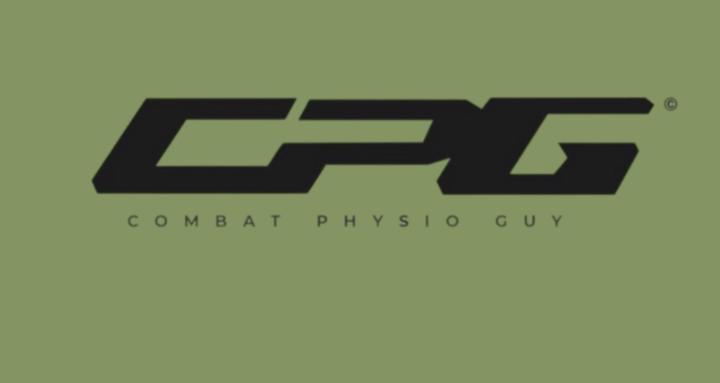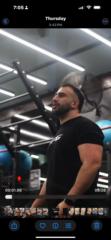GETTING REFERRALS WITHOUT CHASING THEM! 😤
How we should be implementing Vertical Integration Strategies as Allied Health Practitioners in Private Practice to make referrals easier from partner businesses👇 Client Acquisition & Onboarding Integration: The trick: get yourself embedded into your partners’ or referrers' onboarding process — before the client even walks through your door. 🛠️ 1. Build strong referral linksPartner with PTs, GPs, and studios. Set up easy referral forms or templates. 🧠 2. Be part of their intakeOffer 10–15 min posture/movement screens. Add quick flag questions to their forms. 📦 3. Share co-branded onboardingWelcome packs with your bio, how you help, and red flag cheat sheets for their staff. 📣 4. Stay top of mindRun briefings, send updates, and share wins. 📊 5. Track what mattersReferrals, conversions, retention, outcomes, partner feedback. Want systems that bring clients to you?📂 Full PDF is in “Treatment Notes” in the Classroom.
Keep It Simple, Keep It Savage – The Power of Intentional Programming
Too many coaches & clinicians fall for the trap of “fancy.” But results come from clarity, not complexity. Here’s why simple > sexy 👇 1. The Fancy Stuff Looks Cool—But Doesn’t Stick 🎯 What you see on Instagram isn’t always what works in the clinic or gym. Jumping from landmine rows to BFR RDLs to single-arm overhead tempo curtsy lunges isn’t a program— It’s a mess in disguise. If your client can’t remember what to do or why, it’s already failing. 2. The Best Programs Are Boring (and That’s the Point) 🧱 Foundational movements, progressive overload, and clear intent. That’s it. Good programming isn’t about novelty—it’s about adaptation over time. Progress doesn’t need to be flashy. It just needs to be measurable and consistent. 3. Simplicity Creates Adherence 🧠 A client who understands why they’re doing something is more likely to: ✅ Show up ✅ Push hard ✅ Trust the process When things feel too “random,” buy-in drops. When it’s clear and intentional, people go all in. 4. Social Media Is a Highlight Reel, Not a Blueprint 📱 Don’t let the dopamine hits from reels and swipe workouts influence your programming. You’re not building a brand—you’re building a resilient human. 5. To Summarise Forget being impressive. Be effective. Strip the fluff, dial in intent, and double down on the basics. Savage results come from simple reps done well, not circus tricks done once. PDF version of this under "Treatment Notes" in the classroom!
3
0
🧠 AUTHORITY DRIVES RETENTION - Why Framing the First Consult is Everything - Set the Tone!!
The first consult isn’t just about assessment - it’s about setting the tone. If you don’t control the narrative from Day 1, your client will. Here’s why 👇 1. Clients Love Jumping the Gun 🚨 If things don’t go their way within a few sessions, they panic: ❗ “Should I get a scan?” ❗ “Is it something worse?” ❗ “I read online that it could be X…” This panic isn’t clinical—it’s psychological. It comes from a lack of clarity, consistency, and trust. 2. You Need to Anchor the Journey 🧭 From the first session, clients need to hear: 📌 “This is a process. This is the timeline. This is how we know it’s working.” When you frame the journey, you reduce fear-based decision-making. It makes clients less likely to go rogue, chase unnecessary scans, or seek second opinions too early. 3. People Don’t Need More Solutions—They Need Direction 🧱 The internet is full of “fixes.” But clients don’t need 5 options—they need one direction they believe in. Your role is to filter the noise and lead the way. 4. Framing Builds Authority and Trust 💼 When you hold space and outline the roadmap from the start, you stay in control. This doesn’t mean dismissing concerns—it means leading with confidence. And confident framing early on = long-term trust and better adherence. 5. TL;DR: Clients want certainty more than solutions. Set expectations early, anchor them in process, and keep the wheel in your hands. The first consult is your shot to establish control, trust, and clinical authority. 👉🏼 PDF version of this under “Treatment Notes” in the classroom.
WHY STICKING TO A TREATMENT SEQUENCE MATTERS (CLINICALLY & PSYCHOLOGICALLY)
Too many practitioners change the game plan too early. But your treatment sequence isn’t just a clinical roadmap - it’s a psychological contract. Here’s why 👇 1. Structure Breeds Safety 🧠 - When clients see a clear, step-by-step sequence, they feel safe. - It gives their nervous system certainty. - It builds trust in you, and belief in the process. Changing the plan too early = sabotaging momentum. 2. Emotional Investment is a Tool ❤️ - When clients can see progress on a set path, they start to care. - They commit. They show up. They do the work. - This emotional buy-in makes them less likely to drop off or self-discharge prematurely. “I’m at phase 3 of 6” feels powerful - like a journey they want to finish. 3. Jumping Around Creates Confusion ❌ When we switch approaches too often (manual > dry needling > strength > back to manual), clients get mixed messages: “Is this working?” “Are we guessing?” “Why hasn’t it improved yet?” Stick to the sequence, even if it’s not exciting every session. 4. Clinical Effectiveness Still Comes First ✅ - This isn’t about being rigid—it’s about being intentional. - If something needs to change, explain why, and how it still fits into the bigger plan. - The structure is flexible—but not chaotic. To summarise: - Your treatment plan is more than a plan. - It’s a promise, a story arc, and a motivational framework. - Don’t change it just because things “plateau”- double down, reinforce, and refocus. 👉🏼 PDF version of this under “Treatment Notes” in the classroom.
PEOPLE BUY YOU BEFORE THEY BUY THE SERVICE 🤑
You can have the best techniques, degrees, and modalities— But if your clients don’t vibe with you, they won’t stick around. Here’s why the person matters more than the product 👇 1. People Don’t Buy Treatments—They Buy Trust 🤝 Dry needling, rehab plans, cupping, strength blocks… all of it means nothing if they don’t trust the person delivering it. They’re not investing in a “session.” They’re investing in your confidence, clarity, and care. 2. Your Energy Sets the Tone ⚡ If you come across uncertain, rushed, or disconnected—they’ll pick up on it instantly. If you show leadership, calmness, and direction—they’ll follow you anywhere. Great clinicians lead with presence. The service comes second. 3. The Therapeutic Relationship is the Real Intervention ❤️🔥 Evidence shows: the relationship is often more powerful than the modality. That rapport, connection, and consistency? That’s what makes clients stick, rebook, and refer. 4. Authenticity Over Perfection 🧠 You don’t need to be perfect or polished. You just need to be real, grounded, and emotionally intelligent. Clients remember how you made them feel, not which glute bias drill you prescribed. Now go out there and continue to be a genuine person and excellent communicator!! Be you!
1-25 of 25

skool.com/cpguniversity
The All-Rounder Blueprint: An exclusive community with a step-by-step system for health pros to be fully booked, clinic-wide weapons—all year round!
Powered by

